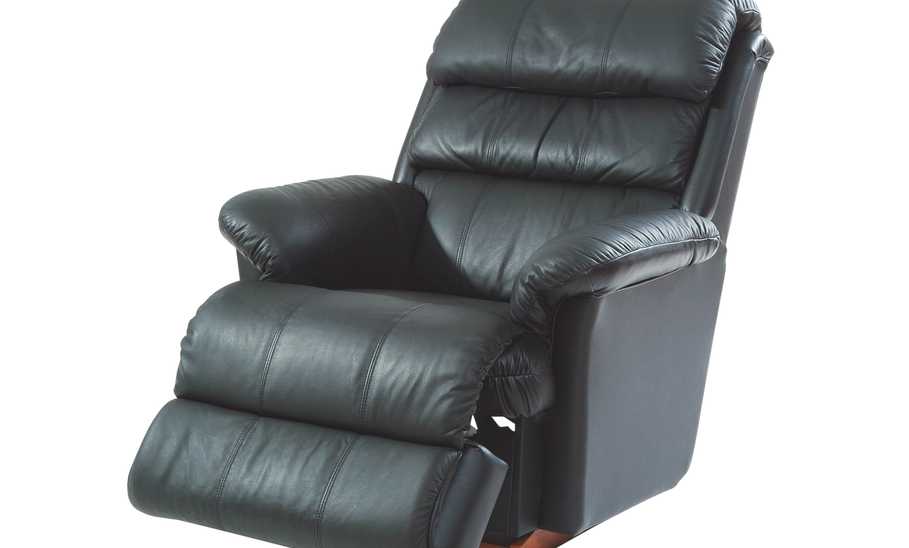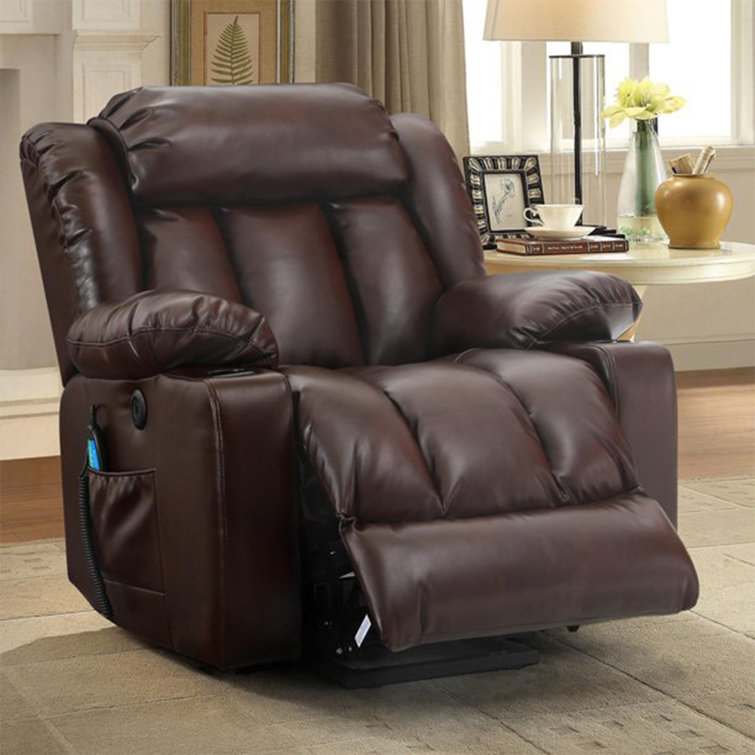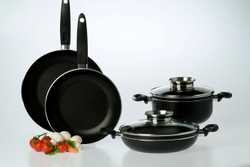- Dimensions (upright): 47" L x 31" W x 51" H
- Weight limit: 400 pounds
- Material: Leather or faux leather (SoHyde)
- Type: Manual
- Price on publish: Starts at $2299
Best Recliners for Neck Pain Relief (and Other) Pain

Our evaluations and opinions are not influenced by our advertising relationships, but we may earn a commission from our partners’ links. This content is created by TIME Stamped, under TIME’s direction and produced in accordance with TIME’s editorial guidelines and overseen by TIME’s editorial staff. Learn more about it.
Sprawling out on a comfy sofa at the end of a long day may sound appealing, but if you suffer from neck pain, you may need to be upright to get relief. The National Spine Health Foundation states that almost 100 million Americans reportedly struggle with neck and back pain. According to the U.S. Bureau of Labor Statistics, people in the United States spend on average 43.6% of their work day sitting, so finding a comfortable piece of furniture to relax in that won’t add further stress on your neck, back, and spine is important.
Reclining chairs have been around since the late 1920s when La-Z-Boy chairs came into fashion, and they continue to be popular choices due to the comfort they provide. Choosing the right reclining chair may help alleviate the unnecessary strain on your body by supporting your neck and spine. “A good recliner can be beneficial for relaxing if you have neck pain, as it provides adequate support and comfort that can alleviate strain on your neck,” says American Physical Therapy Association spokesperson Monique Caruth, PT, DPT, a licensed physical therapist with over a decade of home health care experience.
If your body, especially your neck, is stiff and sore, read on to learn about what makes a good recliner.

The Perfect Chair® is recommended by doctors (according to its website) due to its design to relieve the back and spine. The full-support head pillow offers ergonomic comfort and protection for your head and neck, making it more than suitable for those suffering from neck pain. The chair has a manual recline lever and adjustable lumbar support to set the chair to your preferred angle using your body weight. Shopping tip: The Perfect Chair® also made our lists of the best recliners and the best recliners for back pain.
A pricey zero-gravity recliner may be worth the money due to the full support head pillow that can be adjusted for comfort, plus extra lumbar support.
Read also: Best Pillows for Neck Pain and a Better Night’s Sleep, According to Experts

This lift recliner comes with heat and massage for sore muscles and provides a headrest to stabilize the neck and head. Operated by remote control, this recliner may appeal to older adults on a budget due to its affordability and comfort. The chair reclines up to 160 degrees and adjusts easily to the lift or reclining position using two buttons built into the recliner’s armrests. If you like this recliner by Latitude Run, they also make sleeper sofas, including one with an adjustable backrest.
An oversized, affordable recliner that lifts—making it easy to get in and out—and also includes heat and massage features to help soothe sore muscles.
This zero gravity recliner from Raymour & Flanigan comes with adjustable lumbar support to ensure you find the best position for your sore muscles or pain. We love the built-in USB port and cup holder as great extras, but the power recline and power headrest with a comfortable cushion are the real assets here if you suffer from neck pain.
This leather, power-adjustable recliner from a reputable seller is relatively affordable and provides lumbar, neck, and head support.

If you want to invest in a chair that will age with you, this durable recliner is a great option. It offers lift assistance if you have trouble getting in and out of the recliner, and it is designed to provide adjustable body weight distribution for ergonomic support. Earl Gunther Jr, PT, Area Director and partner of FYZICAL Therapy & Balance Centers in Chicago recommends this recliner. He says, “This recliner is designed to alleviate pressure and stress on your back muscles, providing relief from neck pain and promoting relaxation throughout your body.”
This affordable recliner offers a lift for easy entrance, plus heat and massage options.

This recliner is not only a great manual option, it can be customized to suit your style and comfort, with many color and pattern choices, plus standard or memory foam cushions. The rolled arms provide extra support and it’s easy to attach a recliner pillow for optimum neck support. It’s also perfect for taller adults (5’10” to 6’2”) due to the high-leg design.
If you are 5’10” or taller and need a good-looking, comfortable recliner (and don’t mind adding a recliner pillow for optimum neck support), this one's for you.
This recliner is made from comfortable molded foam and may be a good choice if you have neck or back strain due to its contoured backrest and pushback reclining ability. Its deep back cushion is roomy, and it comes with a matching ottoman.
This late-century modern throwback recliner in comfortable leather is a solid choice for comfort if your aches and pains are not severe.

“This recliner offers adjustable reclining angles, allowing you to find the perfect position that provides maximum relief for your neck pain,” says Gunther. He adds, “With its built-in headrest, you can enjoy extra support and cushioning for your neck.” In addition, I selected this recliner for new parents due to its gentle gliding capabilities.
This one is for you if you want a solid recliner with swivel, rocking capabilities, and excellent adjustable reclining angles.
I interviewed numerous physical therapists (PTs) and doctors of physical therapy (DPTs), plus home health aids and chiropractors, to learn what makes the best recliners for neck (and other) pain. In addition, I read hundreds of customer reviews on products and searched for various styles and budgets to develop my list. As always, speak to your own healthcare professional about your particular situation before purchasing a recliner to help keep neck pain at bay.
When shopping for the best recliner to negate your neck pain, consider the following important factors.
While a recliner usually keeps your feet off the floor, measuring your body to fit the chair is important, especially if you’re purchasing a chair online. Height matters when you purchase any chair, even a recliner. Physical therapists recommend adjustable reclining chairs because you can move the chair to fit your body in the most comfortable and ideal position. “If buying a recliner to avoid neck or back pain, consider the proper height and weight for your body,” advises Caruth. “It should not be too narrow or too wide. Ensure that there is adequate lumbar support. The recliner should not be too soft that you sink into it.”
When buying a recliner, it’s important to find one that fits your body type, says Rick Douglass, PT, DPT, and President of Franchise Operations for FYZICAL Therapy & Balance Centers. “Depending on your height, the portion that is designed to fit the curve of your neck may be too high, and instead, push your head forward, which is not ideal. I recommend trying different recliners to find the right fit for you and your spine.”
Many people who suffer from neck pain may also have trouble with their backs. You want to make sure the recliner doesn’t make you slouch, so look for lumbar support (which isn’t just a design feature for ergonomic office chairs). “You want it to be comfortable but firm enough to reduce any additional strain when getting in and out of it. Automatic adjustments can be convenient, as they reduce excessive bending, twisting, pulling, and pushing, which can aggravate neck and back pain but a well-designed manual recliner can be just as effective,” says Caruth.
You’ll also want to pay close attention to the headrest and ensure it fits you comfortably. Adjustability will go a long way in helping you create the best support for your personal needs.
This is a nice feature to have in a recliner because it means the chair evenly distributes your weight, which gives the feeling of weightlessness. This adds to your comfort while also providing balanced support to your body.
“If choosing a manual recliner, make sure you do have sufficient strength to push and pull the lever, enough flexibility to reach the lever, and that it doesn’t rapidly bounce when you adjust positions,” recommends Caruth.
Just like when you are purchasing other pieces of furniture, such as a leather sofa, pick the highest quality recliner you can afford. Look for one that has the durability to last over time. You’ll also want to make sure your recliner is easy to clean.
According to Caruth, using a recliner can be recommended for those with back or spine pain, but it’s advisable to consult a healthcare professional for personalized advice. “To sit in a recliner without causing neck pain, ensure that the headrest supports your neck and thoracic spine, and adjust the recliner to a comfortable position with proper lumbar support so your neck isn’t in exaggerated extension,” she advises.
It can be if it’s a good fit for you and provides the type of support that you need. Gunther says, “A recliner can help with neck pain by unweighting the spine and shoulders and taking pressure off of the soft tissue structures that cause pain, in addition to relaxing the muscles around the neck.”
There’s no one best recliner that will work for everyone. “Choosing a recliner for neck and back pain depends on personal preference,” says Caruth. “Just want to remind anyone looking to purchase a recliner to look for features like lumbar support, adjustable headrests, and overall comfort.”
Some do. The physical therapists I interviewed offered their opinions on various recliners. “Generally, a recliner should support the entire spine from the tailbone to the base of the head, providing relief or unweighting the spine and relaxing it,” says Gunther. “In addition, the arms should be supported, which will help unweight the shoulder muscles (upper trapezius) and take some additional pressure off the neck. The degree of reclining position would be more individual, so having a recliner that can be held in multiple positions of recline is an advantage.”
It is always best to speak to your doctor or physical therapist, who can advise you on the best type of recliner for your particular condition. The above list is a good starting point, and some additional recliners recommended by physical therapists include the Esright 360-Degree Swivel Heated Massage Recliner and the Human Touch Perfect Chair Zero Gravity.
“To sit in a recliner without causing neck pain, ensure that the headrest supports your neck and thoracic spine. Adjust the recliner to a comfortable position with proper lumbar support so your neck isn’t in exaggerated extension,” advises Caruth.
According to Caruth and other physical therapists I spoke to, a recliner can be a bad idea if it lacks proper design for neck or back pain. “Watch out for insufficient support, uncomfortable angles, or poor construction that may exacerbate existing issues,” she says. “When in doubt, a physical therapist (who you may be seeing for your neck and back pain) can advise on a good fit for you and address your pain issues.”
The information presented here is created by TIME Stamped and overseen by TIME editorial staff. To learn more, see our About Us page.



